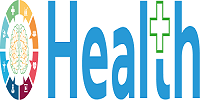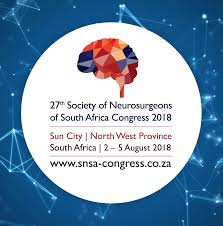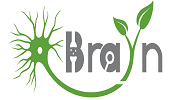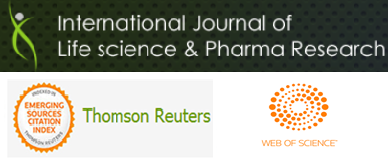Theme: Scientific quest to enhance the mystified and fascinating Neurons
Neuron 2018
World Neuron Congress
On behalf of the Scientific Committee, we are honoured to invite you to World Neuron Congress to be held in the Helsinki, Finland during November 26-28, 2018.
The Theme of the World Neuron Congress is “Scientific quest to enhance the mystified and fascinating Neurons", which covers wide range of critically important sessions in the field of Neurology, Neuroncology, Brain Cancer and Imaging. Objective of this meeting is to share the foremost updated knowledge on the neurology and the novel therapeutic options in Cancer treatment. We will gather academicians and young inspired scientists from all around the world involved in researches at the cutting edge in the study of the neurology and oncology.
The conference proceedings will include seminars, symposiums, Oral Presentations, workshops and Poster Presentations on the latest treatment innovations in the field of Neurology, Oncology, Neurosurgery, Brain Stroke, Medical Imaging, and Cancer by experts from both Academic and Business background.
World Neuron Congress committed to create real and reliable contributions to the scientific community. ME Conference organize 2000+ Conferences once a year across USA, Canada , Mexico, Europe, Georgia, Middle East & Asia Pacific with support from a thousand additional scientific societies and Publishes 900+ Open access journals that contains over thousands eminent personalities, putative scientists as editorial board members.
Why Finland?
The Neuron 2018 in Finland gives us the inkling of about 14 countries from Europe in many aspect and underpinning of European civilization. When it comes to health care sectors Finland plays a vital role among all by offering universal health care system. The state assets primary, secondary and tertiary healthcare for their citizens followed by public health campaigns which is self-reliantly funded by the of Finland government. The Finland growth institute was renowned in the ministry of science and technology that has equipped a long-term plan of science and technology for the following century which considered some accessible resources. Same way Finland also was selected for its advantage areas, proving different drugs, vaccines and in the field of neurology. Henceforth Finland stays as a fascinating country.
Why to attend??
World Neuron Congress is a unique forum to bring worldwide distinguished academics in the field of Neuroscience, Neuroncology, Neuropsychiatry and Neurology, neurologists, Brain Tumours, Neurosurgery and Public Mental health. Neuron 2018 is a kind of gathering to unite overall recognized scholastics, Brain analysts, general wellbeing experts, researchers, scholastic researchers, industry specialists, researchers, scientists, academic scientists, industry researchers, scholars to trade about best in class research and to exchange about state of the art research and technologies.
Aim of this conference is stimulate new ideas in the treatment of neuron diseases that will be beneficial across the spectrum of Neuron 2018.
Target Audience:
- Neurophysiologists
- Neurologists
- Paediatric Neurologists
- Neurosurgeons
- Physiatrists
- Research scientists
- Neurology Organizations
- Pharmaceutical companies
- Neuro and CNS drug Industries
- Neuroscience associations
- Neuroscience foundations
- Neuroradiologists
- Professors
- Students from Academia in the study of Neurology and Neurophysiology
- Researchers who utilize neurophysiological techniques and also knowledge in diagnosing and in treating nervous system disorders
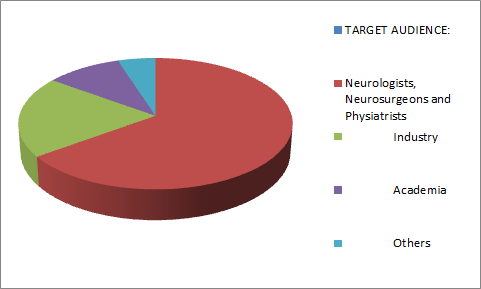
Track 1: Neurology
Neurology is a branch of medical science that is concerned with disorders and diseases in the nervous system. Neurology involves the study of the central nervous system, the peripheral nervous system and the autonomic nervous system and structural and functional disorders of the nervous system ranging from birth defects through to degenerative.
Track 2: Neurological Disorders
Neurological disorders are diseases in the central nervous system (CNS) and peripheral nervous system. In other words the brain, spinal cord, autonomic nervous system, peripheral nerves, cranial nerves, nerve roots, neuromuscular junction, and muscles are affected by these disorders. The burden imposed by such chronic neurological diseases (Alzheimer’s disease (AD) and other dementias, epilepsy, Parkinson’s disease (PD), and acute ischemic stroke) in general can be expected to be particularly devastating in poor populations. According to the survey, there are more than 600 neurological disorders. World Health Organization data suggest that neurological and psychiatric disorders are an important and growing cause of morbidity. The magnitude and burden of mental, neurological, and behavioural disorders is huge, affecting more than 450 million people globally. According to the Global Burden of Disease Report, 33 percent of years lived with disability and 13 percent of disability-adjusted life years (DALYs) are due to neurological and psychiatric disorders, which account for four out of the six leading causes of years lived with disability. Neurogenesis is the method by which neurons are generated from neural stem cells and progenitor cells. Through precise genetic mechanisms of cell fate determination, many different varieties of excitatory and inhibitory neurons are produced from various kinds of neural stem cells.
Track 3: Neurogenesis and Gliogenesis
Neurogenesis is the technique by using which new neurons are formed within the brain. Neurogenesis is essential when an embryo is growing, but also continues in certain brain areas after delivery and in the course of our lifespan. The mature brain has many specialized areas of function, and neurons that differ in shape and connections. Gliogenesis is the developmental method by using which glial cells – astrocytes, oligodendrocytes, Schwann cells and microglia – are generated. It consists of the production of glial progenitor cells and their differentiation into mature glia. Gliogenesis results in the formation of non-neuronal glia populations derived from multipotent neural stem cells. In this ability, glial cells offer a couple of functions to both the central nervous system (CNS) and the peripheral nervous system (PNS). Subsequent differentiation of glial cell populations results in function-specialised glial lineages.
Track 4:Brain Tumours & Neuro Oncology
Essential cerebrum tumours can be either harmful (contain growth cells) or considerate (don't contain disease cells). An essential mind tumour is a tumour which starts in the cerebrum. In the event that a destructive tumour which begins somewhere else in the body sends cells which wind up developing in the cerebrum, such tumours are then called optional or metastatic mind tumours. This talk is centred around essential cerebrum tumours. Mind tumours can happen at any age. The correct reason for cerebrum tumours is not clear. The manifestations of cerebrum tumours rely on upon their size, sort, and area. The most widely recognized side effects of mind tumours incorporate cerebral pains; deadness or shivering in the arms or legs; seizures, memory issues; state of mind and identity changes; adjust and strolling issues; sickness and regurgitating; changes in discourse, vision, or hearing.
Track 5: Neurophysiology
Neurophysiology is extensively defined as the study of nervous system function. In this area, scientists look into the central and peripheral nervous systems at the extent of whole organs, cellular networks, single cells, or even subcellular compartments. A unifying feature of this extensive-ranging area is an interest inside the mechanisms that result in the generation and propagation of electrical impulses inside and among neurons. This subject is essential not only for our knowledge of the captivating techniques using human thought, but also for our potential to diagnose and deal with disorders related to nervous system malfunction.
Track 6: Neurochemistry
Neurochemistry deals with the outstanding chemistry that happens within the brain, nervous system and the nerve cell with which it communicates. The phenomenon of chemistry that generates electric signals which propagate along nerve cells and the chemistry at the synapse through neurotransmitters are the prime locations. Strong research work on brain and its effect on behaviour and cognitive capabilities will portray the neurochemical behaviour and illness due to chemical imbalance in order to explore the possibilities of advances inside the discipline of neurosciences and disorders.
Track 7:Neuropsychiatry And Mental Health
Neuropsychiatry is the combination of Psychiatry and Neurology that deals with mental disorders, which in most cases can be shown to have their origin from an identifiable brain malfunction. Psychiatrists have laid claim to illnesses of the mind. Major Neuropsychiatric Conditions include the following: Addictions, Childhood and development, Eating disorders, Degenerative diseases, Mood disorders, Neurotic disorders, Psychosis & Sleep disorders.
Track 8: Developmental Neurology
The mature nervous system comes into being in the course of embryonic and post-embryonic development due to a sequence of developmental programs that consist of the start of nerve cells and their assisting (glia) cells, the migration of those cells to defined locations inside the developing nervous tissue, the establishment of connections of those cells to particular target regions, and selective neuronal cell death. As soon as established, we now recognise that the mature nervous system reveals a great degree of plasticity, changing in response to experience and use. Information received in research of the factors that have an effect on nervous system development and plasticity can also provide a key closer to unlocking the capacity of the mature nervous system.
Track 9: Behavioural Neurology
Behavioural Neurology publishes original experimental papers and case reports dealing with disordered human behaviour. These embrace the field of cognitive neurology, biological psychiatry, neuropsychology and cognitive neuroscience. The emphasis of the approach is on lesion and imaging studies that explore abnormal human cognition and behaviour. The journal embraces matters of interest to clinicians, such as behavioural neurologists and neuropsychiatrists, and cognitive neuroscientists, such as neuropsychologists, neuropathologists, neurochemists, psychopharmacologists and metabolic scientists with a special interest in human neurological disorders.
Track 10: Molecular and cellular Neurology
Molecular neuroscience is a branch of neuroscience that observes concepts in molecular biology applied to the nervous systems of animals. The scope of this subject covers topics such as molecular neuroanatomy, mechanisms of molecular signalling in the nervous system, the effects of genetics and epigenetics on neuronal development, and the molecular basis for neuroplasticity and neurodegenerative diseases. As with molecular biology, molecular neuroscience is a relatively new field that is considerably dynamic. Cellular neuroscience is the study of neurons at a cellular level. This includes morphology and physiological properties of single neurons. Several techniques such as intracellular recording, patch-clamp, and voltage-clamp technique, pharmacology, confocal imaging, molecular biology, two photon laser scanning microscopy and Ca2+ imaging have been used to study activity at the cellular level. Cellular neuroscience examines the various types of neurons, the functions of different neurons, the influence of neurons upon each other, how neurons work together.
Track 11: Neuropharmacology
Neuropharmacology discusses the drug-induced changes in functioning of the nervous system. The specific focus on this will be to provide a description of the molecular and cellular actions of drugs on synaptic transmission. Refer to specific diseases of the nervous system and their treatment in addition to giving an overview of the techniques used for the study of neuropharmacology.
Track 12: Neurosurgery
Clinical and surgical examination which deals with the neurological treatment of specific disorders related to brain, spinal cord, peripheral nerves, and extra-cranial cerebrovascular system is termed as neurosurgery. Emergencies like intracranial haemorrhage and neuro trauma are basically involved in most of the neurosurgery. Intracerebral haemorrhage being the main cause of morbidity and mortality, results in affecting between 37 000 and 52 400 patients annually in the United States. By the year 2020, Global Interventional Neurology Market is expected to reach $2,370.4 Million, expected to have a CAGR of 8.4% from 2015 to 2020. Recent advances in surgical technology have meant that the focus of treatment for spinal conditions has progressed towards preservation of normal spinal motion and sparing of structures adjacent to problem areas. Some of the crucial types of neurosurgery includes vascular neurosurgery and endovascular neurosurgery, stereotactic neurosurgery, functional neurosurgery, and epilepsy surgery, brain tumour, oncological neurosurgery, skull base surgery, spinal neurosurgery, peripheral nerve surgery.
Track 13: Neurotraumatology
Neurotrauma is a vital public health problem that deserves the attention of the world's health network. Estimates of brain and spinal cord damage incidence imply that those injuries purpose extensive losses to individuals, families, and groups. They bring about a huge number of deaths and impairments leading to everlasting disabilities. Research has also proven that traumatic brain injury (TBI) generally requires long-term care and consequently incurs financial value to health systems. Because of this, many countries need to expand surveillance structures and conduct epidemiologic research to measure the effect of neurotrauma among their people to guide the development of more powerful preventive techniques. Some of methods have already proven effective.
Track 14: Neuroendocrinology
Neuroendocrinology, the field concerned with how the nervous system controls hormonal secretion and the way hormones manage the brain, is pivotal to physiology and medicine. Neuroendocrinology has disclosed and underpins essential physiological, molecular biological and genetic concepts which include the regulation of gene transcription and translation, the mechanisms of chemical neurotransmission and intracellular and systemic feedback control systems. Reproduction, growth, stress, aggression, metabolism, birth, feeding and drinking and blood pressure are some of the physical functions that are induced and/or controlled via neuroendocrine systems. In turn, neuroendocrine disorder because of genetic or other deficits can lead, for instance, to infertility, impotence, precocious or delayed puberty, defective or excessive growth, obesity and anorexia, Cushing's Syndrome, high blood pressure or thyroid problems.
Track 15: Neuro Ophthalmology
Nero Ophthalmology is a specialty that concentrates on the neurological disorders related to the eye. Like we all know, the human eye captures the visuals it sees and transmits to the brain to be resolved as images. It is the optic nerve that transmits these visual stimuli and a dysfunction of this entity might cause visual impairment and could even lead to irreparable damage.
Track 16: Pediatric neurology
Pediatric neurology (also known as child neurology) is the branch of neurology that specializes in the diagnosis, treatment and management of neurological conditions in from newborns to adolescence. Pediatric neurologists put special emphasis on diseases and disorders of the spinal cord, brain, peripheral nervous system, autonomic nervous system and muscles and blood vessels.
Track 17: Neuropathology
Neuropathology is the study of central and peripheral nervous tissue in adults and children. The primary concern is the diagnosis of brain tumours, and neuropathologists are often able to give a preliminary diagnosis to the neurosurgeon while the patient is still on the operating table. Opinions, involving interpretation of special stains and molecular tests, will guide other members of the multidisciplinary team when deciding upon treatment strategies. Most work is on the living, but neuropathologists are also responsible for post-mortem brain analysis, for example to categorise forms of dementia, investigate possible genetic conditions, and assess trauma. They look at muscle to diagnose inherited and acquired muscle diseases, alongside peripheral nerve samples and occasionally ophthalmic specimens.
Track 18: Computational Neurology
Computational neuroscience is the study of brain characteristic in terms of the facts processing properties of the systems that make up the nervous system. It is an interdisciplinary technology that links the various fields of neuroscience, cognitive science and psychology with electrical engineering, computer science, mathematics and physics. Computational neuroscience is wonderful from psychological connectionism and machine learning in that it emphasizes descriptions of functional and biologically sensible neurons (and neural structures) and their physiology and dynamics. Those models seize the essential capabilities of the biological system at multiple spatial-temporal scales, from membrane currents, protein and chemical coupling to network oscillations, columnar and topographic structure and gaining knowledge of and memory. Those computational models are used to frame hypotheses that can be directly examined by modern-day or future biological and/or psychological experiments.
Track 19: Neurodegenerative And Neuroinflammation
Neurodegeneration refers to the severe damage that occurs in the central nervous system to the structure and function of neurons that pave the way to the demise of neurons. It results in diseases that completely demolish the motor neurons, where motor neurons are the nerve cells that create the way involving the electrical impulses from the brain to the spinal cord. Infections and traumatic brain injuries lead to acute inflammation of the central nervous system known as neuroinflammation. Chronic inflammations are integrated with neurodegenerative diseases. Recent research has found the inflammatory process is being closely linked with multiple neurodegenerative pathways, which are linked to depression. Accordingly, pro-inflammatory cytokines play a major role in the pathophysiology of depression and dementia. These data proves that pro-inflammatory agents are the causative effects of neuroinflammation.
Track 20: Neuroinformatics
Neuroinformatics is the most recent addition to the world of Neurology. This discipline is basically the combination of informatics and brain research. The informatics part deals with the enormous amount of data handling and processing while the brain research ends up in providing millions of data out of its experiments.. Neuroscience is rich in diversity, comprising of numerous and different sub-disciplines of neuropsychology and cognitive neuroscience. The main aim of Neuroinformatics is to develop tools to manage, share, model and analyse data obtained from Neurological studies.
Track 21: Research And Treatments
Exploration into medicines for health issues of the CNS made great walks in the previous number of decades, yet helpful alternatives are constrained for some patients with CNS disorder. Nanotechnology has risen as an animation and promising new methods for treating neurological disorder, with the opportunity to on a very basic level replace the way we approach CNS-focused on therapeutics. When all is said in done, atoms that infiltrate the blood-brain boundary is lipophilic and under 500 Da in proportions. These novel properties minimize the quantity of potential restorative devices ready to get to the brain. Turn look into in the region of Risotto biotechnology has afflicted inductive devices and medication conveyance by creating atoms that are littler than 75 in proportions and offered with unique properties. These types of Nano measured particles have a powerful part in therapeutics for mind concern, particularly in overcoming and inspiring upgraded treatment alternative.
Related Societies and Associations:
USA:
American Board of Psychiatry and Neurology (ABPN), American Academy of Neurology (AAN), American Society of Neuroimaging, American Academy of Neurology, American Association of Neurological Surgeons, American Board of Psychiatry and Neurology, American Society of Preventive Oncology, American Society of Paraesthesia Nurses, The American Society of Neuroradiology (ASNR), American Neurological Association (ANA), American Academy of Sleep Medicine , American Association of Neuromuscular & Electro diagnostic Medicine, American Autonomic Society, American Epilepsy Society, American Board of Psychiatry and Neurology, American Society of Preventive Oncology, American Society of PeriAnesthesia Nurses, The American Society of Neuroradiology (ASNR)
Europe:
European Federation of Neurological Societies, The Open Facilities for Training in European Neurology (OFTEN), Global Alliance of Mental Illness Advocacy Networks-Europe, European Academy of Neurology (EAN), European Psychiatric Association (EPA), European College of Neuro Psychopharmacology (ECNP), European Stroke Organisation (ESO), European Association of Neurosurgical Societies (EANS), Belgian Brain Council, European Brain Council, Dutch Brain Council, European Association of Young Neurologists and Trainees, Federation of European Societies (FENS), Pan European Regional Committee (PERC) of the International Brain Research Organization (IBRO) , International Federation of Clinical Neurophysiology, , Brains for Brain (B4B) , Federation of the European Societies of Neuropsychology (ESN), European Federation of Associations of Families of People with Mental Illness (EUFAMI) , MQ Health, European Association of Neurosurgical Societies (EANS), Belgian Brain Council, European Brain Council, Dutch Brain Council
Asia pacific and Middle East:
Asian Australasian Society of Neurological Surgeons, Asia Pacific Stroke Organization (APSO), ASEAN Neurological Association, Singapore Medical Association (SMA) , Australian Neuroscience Nurses Association (ANNA), Japanese Society of Psychiatry and Neurology, Chinese Stroke Association, Stroke Society Of The Philippines, Asia Pacific Neuro-biofeedback Association, NeuroAiD at ASEAN Neurological Association, Asia Pacific Paediatric Association, Singapore neuroscience association, Clinical Neuroscience Society Singapore (CNS), University Medicine Cluster, Sing Health Group, Korean Neurology Association, Korean Society for Brain and Neuroscience, Australian Association of neurologists, Australian Health Directory, Japanese Society of Neurology, Chinese American Neurologist Association, Philippine Neurological Association , Movement Disorder Society Of The Philippines, Myanmar Neurological Society, Neuroaid At Asean Neurological Association, Pain Society Of The Philippines, Pakistan Society Of Neurology, Philippine Neurological Association, Philippine Neurological Association , Saudi, Neurological Society, Singapore Medical Association (Sma) , Singapore Neuroscience Association, Singhealth Group, Stroke Society Of The Philippines, Taipei Medical University , Taiwan Neurological Society, The Hong Kong Neurological Society, The International Parkinson And Movement Disorder Society, The Japanese Society Of Neurology, The Neurological Society Of Thailand, University Medicine Cluster, Vietnamese Association Of Neurology
Related Conferences:
- Neuron Conference | Neurologists Meet | Neurological disorders Events
- 31st Neurogenetics and Neurodegeneration Conference: Mobilizing Neurons to Rehabilitate, August 13-14, 2018 Dubai, UAE
- International Child & Adult Behavioural Health Conference, September 13-14, 2018 Dubai, UAE
- International Conference on Bipolar Disorder: Psychiatry and Mental Health, November 8-10, 2018 Abu Dhabi, UAE
- 13th Annual Conference on Dementia and Alzheimer’s Disease, December 13-15, 2018 Abu Dhabi, UAE
- Neurodegenerative and Neuro inflammation Conference : From Discovery to Health, October 18-20, 2018 Finland
- World Summit on Spine and Spinal Disorders, July 27-28, 2018 Atlanta, Georgia, USA
- World Summit on Alzheimer’s Disease, Neurophysiology and Cognitive Neuroscience, August 31-September 01, 2018 Boston, Massachusetts, USA
- World Summit on Stroke & Neurological Disorders, August 31-September 01, 2018 Boston, Massachusetts, USA
- 3rd International Conference on Neuropsychiatry and Sleep Medicine, September 21-22, 2018 Philadelphia, Pennsylvania, USA
- 26th European Neurology Congress, August 06-08, 2018 Madrid, Spain
- 3rd International Conference on Spine and Spinal Disorders, June 11-12, 2018 London, UK
- 23rd International Conference on Neurology and Neurosurgery, April 23-24, 2018 Rome, Italy
- 7th International Conference on Neurological Disorders & Stroke, September 20-21, 2018 Rome, Italy
- 4th Global Experts Meeting on Parkinson’s & Movement Disorders, May 14-15, 2018 Singapore
- 29th International Conference on Psychiatry & Mental Health, September 14-15, 2018 Singapore
- 3rd International Conference on Neuro-Oncology and Brain Tumour, September 14-15, 2018 Singapore
- 8th Global Experts Meeting on Advances in Neurology and Neuropsychiatry, August 27-28, 2018 Tokyo, Japan
- The 4th European Stroke Organisation Conference (ESOC 2018), Gothenburg, Sweden, 16-18 May 2018
- European Association of Neurosurgical Societies (EANS) Lyon Hands-On Course, Lyon, Auvergne-Rhone-Alpes, France, Jun 25 - 29, 2018
- Asia Pacific Stroke Conference 2018, Jakarta, Indonesia, 6 - 9 Sept 2018
- Society of British Neurological Surgeons Spring Meeting (SBNS), The Riviera Centre, Plymouth, Devon, UK, April 11-13, 2018
Summary of World Neuron Congress:
World Neuron Congress is an annual meeting of Neuroscience organizations as well as Neurology committees to discuss the future of the Neurological disorders in terms of collaboration, structures and organizational development. A Neuron disease has become a growing threat, because of the demographic change and the resulting increase in the elderly populations.
Analysis of Neuron Diseases:
Each year 600,000 people are newly diagnosed with the neurological condition. 19% of hospital admissions are for the treatment of neurological problem from a neurologist or neurosurgeon mostly for stroke, epilepsy, dementia, and head injury. Worldwide there is an over 46 million Alzheimer’s patients and in India over 4 million people are suffering with some type of dementia and the number is estimated to rise to about 131.5 million by 2050. Mental health and research on neuropsychiatric diseases were priorities, with more than EUR 280 million invested since 2007. Brain diseases account for 35% of the overall disease burden and the cost European society almost euro 400 billion per year. Neurological and psychiatric disorders affect a growing number of individuals, nearly, one in five Americans in a year and about two billion people globally. According to neurological survey the middle age group (Age 60-69) suffer more due to neuron diseases.
Age wise distribution of neuron diseases:

Geographically, neuron disease drugs market has been segmented into the 10 major regions: Germany, Switzerland, Italy, Russia, Spain, U.K., Switzerland, Netherlands, France, Poland and Rest of the Europe. The market for the neurological disorder drugs has been extensively analysed which is based on their usefulness, effectiveness, sales revenue and also geographic presence. The market size and the forecast in terms of US$ for each disorder, and drug class, distribution channel as well as the geographic regions has been provided for the period of 2016 to 2024. Report on this neurological disorder drugs market also provides the compound annual growth rate (CAGR %) for the each market segment for the forecast period from 2016 to 2024, considering the 2015 as the base year.
Conference Highlights:
-
Neurology
-
Central Nervous System Disorders
-
Cerebrovascular disorders and stroke
-
Neurological and degenerative disorders
-
Neurological disorders and Chronic Pain
-
Neurological disorders and surgery
-
Stroke and its Management
-
Stroke Rehabilitation and Recovery
-
Pediatrics: Neurological disorders and stroke
-
Therapeutic Approaches for Neurological Disorders and Stroke
-
Brain Tumour and Imaging
-
Neuro Pharmacology
-
Neuro biomarkers
-
Clinical neurology
-
Neuro Oncology
-
Neuropharmacology
-
Diagnosis of Neuronal Disorders
-
Neurorehabilitation
-
Neuroimaging
Major Neurology Associations Finland:
-
Finnish Brain Council
-
Brain Association
-
Epilepsy Association
-
Finnish Association for Persons with Intellectual Disabilities
-
Finnish Central Association for Mental Health
-
Finnish Migraine Association
-
Migraine Association of Finland
-
Finnish Parkinson Association
-
Finnish Tourette Association
-
Alzheimer Research Society
-
Brain Research Society of Finland
-
Finnish Association of Doctors in Developmental Disability
-
Finnish Child Psychiatric Association
-
Finnish Epilepsy Society
-
Finnish Neurological Society
-
Finnish Neuropsychological Society
-
Finnish Neurosurgical Society
-
Finnish Psychogeriatric Association
-
Finnish Psychiatric Association
-
Finnish Sleep Research Society
Major International Neurology Associations:
-
American Academy of Clinical Neuropsychology (AACN)
-
American Board of Clinical Neuropsychology (ABCN)
-
American Board of Professional Neuropsychology (ABPN)
-
American Board of Psychiatry and Neurology (ABPN)
-
International Behavioural Neuroscience Society (IBNS)
-
International Neuropsychiatric Association (INA)
-
Society for Neuroscience (SFN)
-
Acoustic Neuroma Association of Australasia (ANAA)
-
American Association of Neuro pathologists (AANP)
-
American Board of Neurological Surgery (ABNS)
-
Japanese Society of Psychiatry and Neurology
-
European Stroke Organisation
-
European Psychiatric Association
-
World Federation of Neurosurgical Societies
-
Asia Pacific Stroke Organization
-
European Association of Neurosurgical Societies (EANS)
-
European Psychiatric Association (EPA)
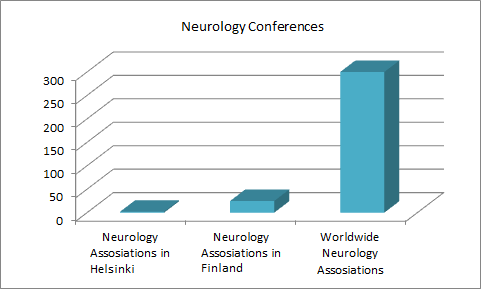
Universities associated with Neurological research in Finland:
-
University of Eastern Finland
-
University of Helsinki
-
University of Oulu
-
University of Turku
-
University of Tampere
-
Kuopio University Hospital
-
Aalto University
-
University of Jyväskylä
-
Tampere University of Technology
-
Laurea University of Applied Sciences
-
University of Lapland
-
Haaga-Helia University of applied sciences
-
JAMK University of Applied Sciences
-
Satakunta University Of Applied Sciences
-
Diaconia University of Applied Sciences
-
Seinäjoki University of Applied Sciences
-
Lahti University of Applied Sciences
-
Savonia University of Applied Sciences
-
Häme University of Applied Sciences
-
Centria University of Applied Sciences
-
Arcada University of Applied Sciences
-
Novia University of Applied Sciences
Universities associated with Neurological research in World:
-
Dalhousie University
-
Leiden University- Neither land
-
Temple University USA
-
University Oklahoma
-
Boston Coll USA
-
Florida International University
-
University California – Davis
-
University Sheffield
-
University Manchester
-
University of Nottingham
-
Cardiff University
-
University of Toronto – Canada
-
University of Munich
-
Eberhard Karls University
-
Charite - Medical University of Berlin
-
University of Bonn
-
University of Göttingen
-
Johann Wolfgang Goethe University
-
Princeton University
-
Massachusetts Institute of Technology
-
Stanford University
-
Columbia University
-
Duke University
-
University of Chicago
-
University of Pennsylvania
-
Brown University
-
Vanderbilt University
-
Vanderbilt Brain Institute
-
University of London
-
University of Otago
-
University of Sheffield
-
Keele University
-
University of Toledo
-
Bournemouth University
-
University of Sydney
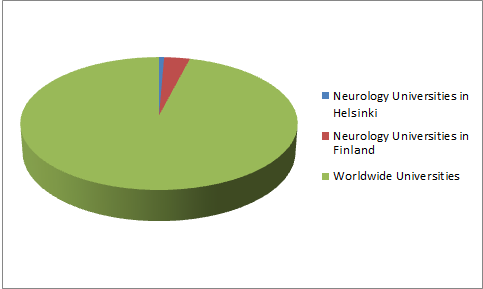
List of Companies associated with Neurology:
-
Avanir pharmaceuticals
-
The Mount Desert Island (MDI) Biological Laboratory
-
Novo Biosciences
-
Astellas Pharmaceuticals
-
Depomed
-
AMRAD Pharmaceuticals
-
Immune Pharmaceuticals
-
TEVA Pharmaceutical Industries Ltd.
-
Eli Lilly
-
Endo International
-
Pfizer
-
Allodynic Therapeutics
-
Arbor Pharmaceuticals
-
Astellas Pharma
-
Biogen
-
CAPNIA
-
Centrexion Therapeutics
-
ContraVir Pharmaceuticals
-
Crescita Therapeutics
-
DAEWOONG
-
GlaxoSmithKline
-
Hydra Biosciences
-
Jiangsu Hengrui Medicine
-
Lexicon Pharmaceuticals
-
Mallinckrodt
-
Midatech Pharma
-
Neurotune
-
Newron Pharmaceuticals
-
Novaremed
-
Novartis
-
PledPharma
-
Premier Biomedical
-
Regeneron
-
Samyang Biopharmaceuticals
-
Hospitals Associated with Neuroscience Research:
-
All around the globe there are 6000 hospitals working on Neurology
-
Some of them among them are:
-
Johns Hopkins Hospital
-
Duke University Hospital
-
Munson Medical Center
-
World Brain Center Hospital
-
Edward Hospital
-
Cleveland Clinic
-
St Jude Children's Research Hospital
-
Johns Hopkins Medicine
-
Mayo Clinic Scottsdale AZ
-
University of Maryland Medical Center
-
Massachusetts General Hospital
-
There are around 120 hospitals in Romania exclusively working on Neurology,
-
"Victor Babes" Clinic
-
Bio-Medica International
-
Centrul Medical Unirea SRL
-
Euroclinic Hospital S.A.
-
Laurus Medical Srl
-
Regina Maria
-
University Hospital Bucharest
Market Value of Neurology research:
The Global Neurology market contributes to $34.5 billion which includes major countries such as USA (74%), Europe (64%), japan (8.3%), and UAE (7.8%).

Fund Allotment to Neurological Research:
-
GAIS- Global Acute Ischemic Stroke- $3.6 bi
-
BRI- Brain Research Initiative -$ 0.1 bi
-
AR- Alzheimer’s Research UAE -$ 0.009 bi
-
NINDS- National Institute of Neurological Disorders and Stroke Funding Strategy- $1.6bi
-
NIHR- National Institute for Health Research- $1.05 bi
-
HBP- Human Brain Project - $ 1.3bi`
Conference Highlights
- Neurology
- Neurological Disorders
- Neurogenesis and Gliogenesis
- Brain Tumours & Neuro Oncology
- Neurophysiology
- Neurochemistry
- Neuropsychiatry and Mental health
- Developmental Neurology
- Behavioural Neurology
- Molecular and Cellular Neurology
- Neuropharmacology
- Neurosurgery
- Neurotraumatology
- Computational Neurology
- Research and Treatments
- Neuroendocrinology
- Neuro Ophthalmology
- Pediatric neurology
- Neurodegeneration and Neuroinflammation
- Neuroinformatics
To share your views and research, please click here to register for the Conference.
To Collaborate Scientific Professionals around the World
| Conference Date | November 26-27, 2018 | ||
| Sponsors & Exhibitors |
|
||
| Speaker Opportunity Closed | Day 1 | Day 2 | |
| Poster Opportunity Closed | Click Here to View | ||
Useful Links
Special Issues
All accepted abstracts will be published in respective Our International Journals.
- Journal of Neurology & Neurophysiology
- Journal of Neurology and Neuroscience
- Brain Disorders & Therapy
Abstracts will be provided with Digital Object Identifier by




















